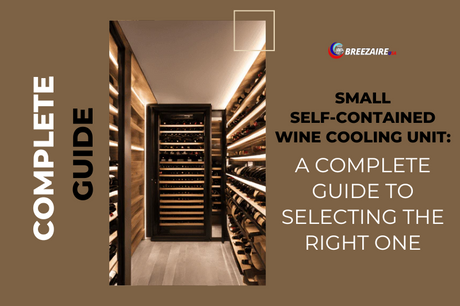Thinking About a Wine Cellar? Here's How to Start at Home

By Jim Hopper, Wine Cooling Expert
With the right planning and equipment, building a home wine cellar is now accessible—even in standard homes. Whether you're converting a closet, repurposing a garage corner, or insulating a basement nook, modern cooling systems like Breezaire make it possible to maintain ideal wine storage conditions in almost any dark space.
Not sure where to begin?
👉 Start with our Complete Wine Cellar Installation Guide to understand key timelines, moisture control, and BTU sizing.
1. How Much Does It Cost to Build a Wine Cellar in Your Home?
| Cellar Type | Price Estimate | Description |
|---|---|---|
| DIY Small Closet Cellar | $800–$2,500 | Basic racks, insulation, compact unit |
| Mid-Sized Room Conversion | $4,000–$12,000 | Vapor barrier, cooling system, finishing |
| High-End Tasting Room | $15,000+ | Custom racks, lighting, flooring |
Factors that impact cost:
- Insulated walls and vapor control
- BTU and unit sizing for proper temperature regulation
- Type of cooling unit and installation complexity
- Wood racks or metal systems and flooring finish
- Ventilation or noise suppression upgrades
2. Key Components of a Functional Home Wine Cellar

A reliable wine cellar must manage heat, moisture, and airflow using specialized technology.
🍷 Essential Components:
- Insulated walls and ceilings to lock in cold air
- Vapor barriers to stop condensation
- A Breezaire cooling unit that maintains 55–58°F
- Wood or metal racks that position bottles horizontally
- Sealed cellar door with thermal resistance
- Quiet cooling technologies that won’t disrupt home life
3. Design Layout: How to Maximize Your Space

📐 Planning the Layout:
- Choose a Location: Pick a dark space like a closet, garage corner, or basement wall.
- Insulate + Seal It Off: Use R-19 or greater insulation and install plastic vapor barriers on all walls and ceilings.
- Divide Into Zones: Bulk storage, display racks, cooling integration zone.
- Consider Flooring: Tile or sealed concrete is ideal. Avoid carpet or wood flooring unless properly moisture-sealed.
- Ventilation: Breezaire units like the WKL series exhaust into adjoining spaces—plan for proper heat dissipation.
4. Best Cooling Systems for Home Cellars
When it comes to cooling technologies, homeowners should focus on quiet, energy-efficient, easy-to-install systems. Breezaire offers three excellent options:
🧊 WKCE Series (Compact Cabinet Cooling)
- Fits in closets or small cellar spaces
- Direct through-wall installation
- Minimal noise and visual footprint
🧊 WKL Series (Self-Contained Cooling Unit)
- Great for medium-sized rooms
- Mounted directly through interior wall
- Easy to maintain, highly reliable
🧊 WKSL Series (Ductless Split System)
- Ideal for luxury builds and minimal interior noise
- Compressor installed in another room
- Higher cost, but seamless integration
Learn more: Ductless vs. Through-the-Wall Cooling
5. Does a Wine Cellar Increase Home Value?
Yes—especially when done right. A well-insulated, temperature-controlled cellar adds both functional and emotional value to a home.
💰 Value Benefits:
- Improves appeal for luxury buyers and wine collectors
- Adds lifestyle upgrade and entertainment potential
- Increases usable home space in stylish, functional way
- Protects valuable wine inventory
6. Racks, Materials & Aesthetic Design Tips

Your racks not only organize bottles—they support airflow and aging.
📦 Popular Rack Materials:
- Wood racks (e.g., mahogany or redwood): classic, elegant, thermal-buffering
- Metal racks: modern look, ideal for small or narrow spaces
- Acrylic or modular: transparent or creative display options
7. System Integration Tips for Seamless Cooling
Whether DIY or professional, system integration is key for performance and airflow:
- Ensure space around unit intake and exhaust
- Don't block air vents with racks or decor
- Match electrical capacity with system demands
- Use ductless split systems for quiet installs in finished rooms
Breezaire’s flexibility allows smooth integration into walls, cabinets, or interior duct zones.
🛒 Plan Your Home Wine Room Today
Breezaire cooling systems make it easy to transform any room into a wine cellar with quiet performance and reliable temperature control.
📞 Need Help? Contact Breezaire USA
- Phone: 1 (800) 702-1381
- Email: support@breezaireusa.com
✅ In-stock residential units
✅ Expert layout and integration support
✅ Fast U.S. shipping








